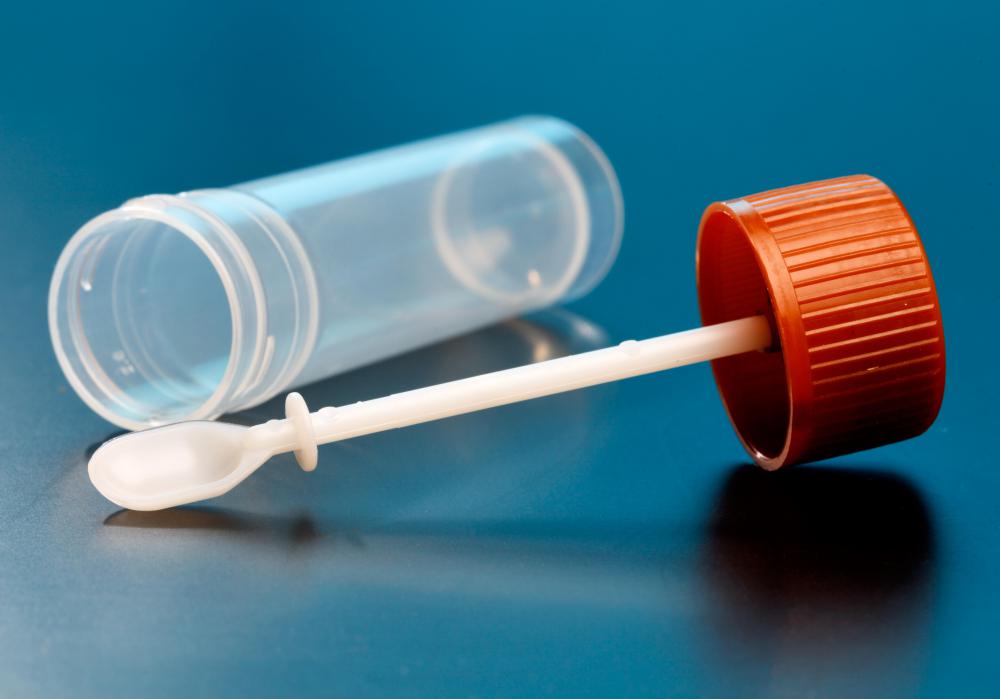At WiseGEEK, we're committed to delivering accurate, trustworthy information. Our expert-authored content is rigorously fact-checked and sourced from credible authorities. Discover how we uphold the highest standards in providing you with reliable knowledge.
What Is a Sudan Stain?
A Sudan stain highlights fats present in a sample like blood or feces. The test uses a family of dyes known as Sudan dyes that attach to fats when they are applied to a microscope slide. Several dyes are available for medical testing, allowing care providers to select the most appropriate for a given sample. The same dyes are also used in manufacturing of some products.
Staining is a common practice for pathologists and other care providers who want to evaluate samples as effectively and reliably as possible. They use stains to highlight certain structures in a sample, or to tag specific compounds. In some cases, a stain reveals the presence of something that shouldn’t be there, while in other cases, stains make it easier to find specific phenomena of interest in a sample. In the case of a Sudan stain, the goal is to highlight any fats present with the dye to allow the pathologist to identify their presence and estimate their concentrations.

These dyes are lysochromic, meaning that they attach to and color fats when added to a sample. Some Sudan dyes are indiscriminate and may work on several types of fats. Others are more focused, and may highlight a particular fat, like a triglyceride. Pathologists evaluating a sample need to consider their options when selecting a dye for testing, to determine the best option. This can depend on why a Sudan stain was ordered and what the pathologist is expecting to find in the test.

Fecal Sudan stain tests are used to check for signs of steatorrhea, or fats in the feces. This can indicate that a patient has a malabsorption problem, or a disorder of the pancreas. Testing can also be used with blood samples in patients with suspected blood disorders. The technician who performs a Sudan stain can note the dye used and the findings, including a positive or negative indicator that fats are present, and which kinds of fats were found. This is a qualitative test only, without providing hard measurements, although the technician can offer information about the apparent concentrations in the sample.

Pathology texts and reference guides for labs may include images of different types of Sudan stain tests. These can help technicians identify findings of interest or concern by comparing them with known samples. Control images are taken from healthy individuals and show what the test should look like if the findings are negative. Other sample images show what happens with different kinds of conditions, highlighting the findings associated with them so pathologists know what to look for and how to accurately identify it.
AS FEATURED ON:
AS FEATURED ON:
















Discuss this Article
Post your comments